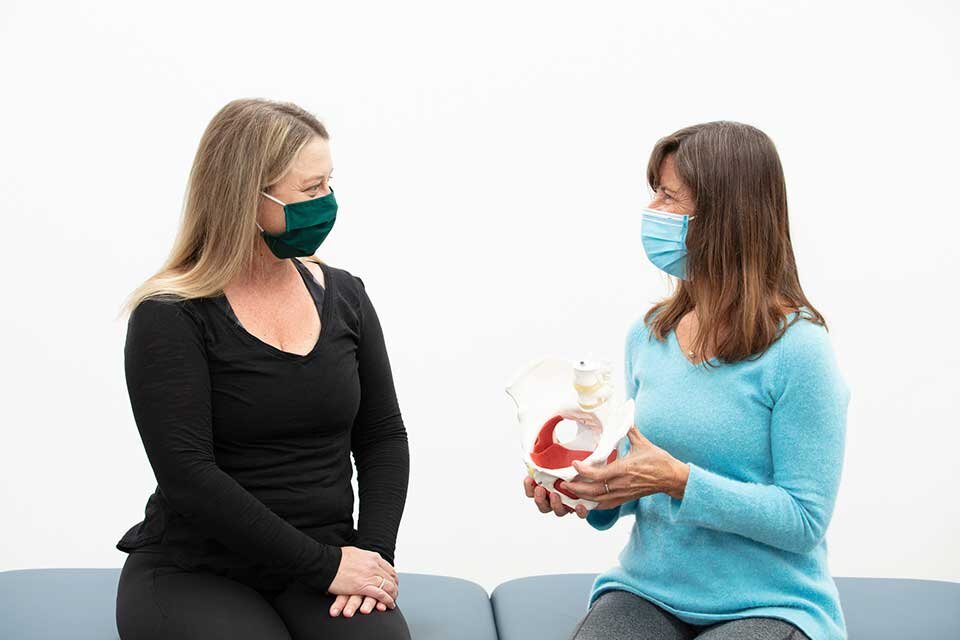
Ann listens | She cares | She understands | She’s an expert | She helped me
Services
Here are the problems I treat and how they’re treated:
Bladder | Bowel | Pelvic pain | Sex | Men | Prolapse | Pregnancy | Postpartum | Transgender | Cancer



Prolapse
What is pelvic floor prolapse?
It’s usually spoken of like this:
“It feels like my bladder/uterus is falling out. I can see my bladder/uterus at the opening to my vagina. There’s a bulge in my vagina/rectum. It feels so heavy down there. When I have a bowel movement it feels like my bladder/vagina/rectum are coming out. I have a hard time emptying my bladder or bowels.”
Pelvic floor prolapse is a general term for a type of hernia in which a pelvic organ (uterus, vagina, bladder, small bowel, or rectum) has lost its structural support and falls or protrudes into the vagina or through the vaginal opening. Often more than one organ is involved in prolapse. Sometimes, despite the best of exercise, re-education and excellent bowel and bladder habits you may still benefit from being fitted for a pessary, or from surgical repair. I’ll work with you and your physician to help with the best recovery to restore your pelvic function and confidence.
50% of all women develop pelvic organ prolapse, and most go undiagnosed or are diagnosed at a late stage. 20% of women with prolapse have surgery, and 30% of those who have surgery need a second surgery later.
How can pelvic physical therapy help with pelvic floor prolapse?
Treatment options include:
Internal and/or external pelvic floor evaluation to assess muscle function, tone and sensory awareness.
Whole body scan with special attention to your abdomen, spine, pelvis and hips, as well as any scar tissue from prior injuries or surgeries.
Specific pelvic floor treatment which will include strengthening if/when you are able to selectively isolate the pelvic floor muscles. The traditional Kegel exercise has a place, but there is much more to the pelvic floor—and about 50% of women do Kegels the wrong way! We will design a program based on your own function and functional needs.
Biofeedback can help you learn to use your pelvic floor and abdominal muscles more effectively.
Bladder and bowel training to help you learn good habits.
Education on how to limit adverse abdominal pressure (which is part of what “pushes” your organ(s) down) during everyday activities like breathing, lifting, bending, and exercising.
Therapeutic exercises designed specifically to help you stretch and strengthen as needed so that you have optimal support for good alignment and movement.
Manual therapy to address scar tissue which may be “pulling” on your organ(s) and soft tissue, and to improve the alignment and mobility of your joints.
